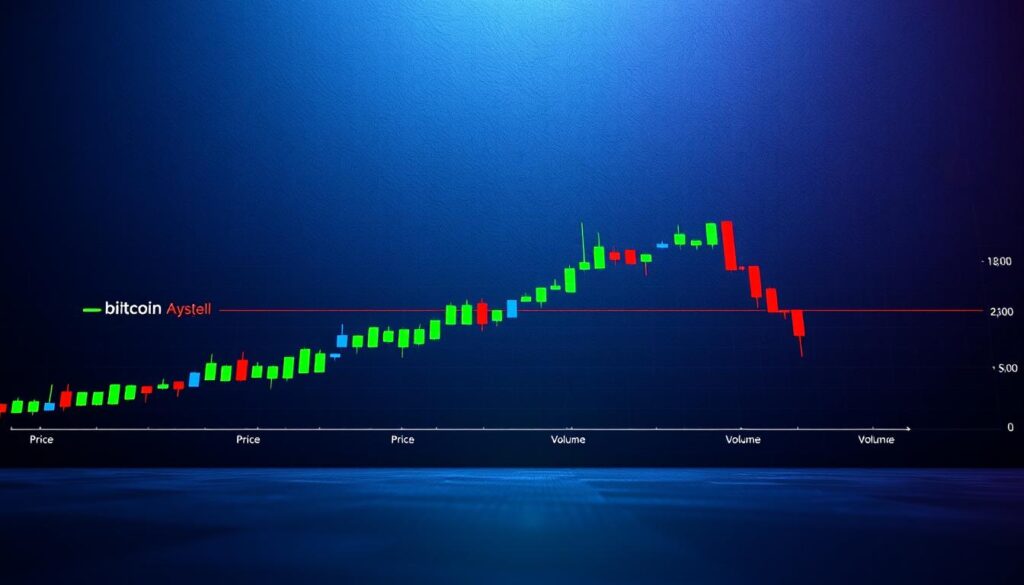Now Reading: Bitcoin Market Cap Dominance Analysis Explained
- 01
Bitcoin Market Cap Dominance Analysis Explained
Bitcoin Market Cap Dominance Analysis Explained

The world of digital assets is vast and complex. Before the leading cryptocurrency emerged, several attempts were made to create better financial systems. These early projects laid important groundwork.
Satoshi Nakamoto changed everything by introducing blockchain technology. This innovation created the first truly decentralized digital currency. It solved problems that its predecessors could not overcome.
This pioneering role cemented the digital asset’s ongoing influence. To measure this influence, a specific metric was developed. This measurement system helps us understand the entire cryptocurrency market.
Bitcoin dominance quantifies its share within the multi-trillion-dollar crypto landscape. It serves as a critical tool for understanding where money flows. This single number provides essential insights for investors and analysts alike.
This guide will explain why this metric matters. It is useful for everyone from conservative investors to active traders. Understanding it can inform smarter investment decisions and portfolio strategies.
Understanding Bitcoin Dominance and Market Capitalization
The cryptocurrency ecosystem relies on specific calculations to gauge relative importance among assets. These metrics help investors understand where capital flows within the digital currency space.
Definition and Fundamental Concepts
Bitcoin dominance measures the flagship digital asset’s share of the entire crypto market. It’s calculated by dividing one asset’s valuation by the total market capitalization of all cryptocurrencies.
The formula appears straightforward: (Individual Asset Market Cap ÷ Total Market Cap) × 100. This yields a percentage showing relative size and influence.
Market capitalization represents the total value of any cryptocurrency. It combines current price with circulating supply. This provides a more complete picture than price alone.
| Component | Description | Calculation |
|---|---|---|
| Price | Current trading value | Market determined |
| Circulating Supply | Coins currently available | Network issuance minus lost coins |
| Market Capitalization | Total valuation | Price × Circulating Supply |
Importance of Market Cap in the Crypto Market
This measurement standard helps compare different digital assets fairly. A coin with high price but low supply might have smaller total value than a cheaper coin with massive circulation.
The total market cap aggregates thousands of cryptocurrencies. This includes major players and smaller altcoins. Understanding these relationships informs smarter investment choices.
When dominance percentages shift, they signal changing investor confidence. Higher numbers suggest preference for established assets. Lower percentages indicate growing interest in alternatives.
Origins and Evolution of Bitcoin Dominance
Before a diverse ecosystem existed, the pioneering digital asset enjoyed a 100% share of the new market. It was the sole player in a field it created.
The landscape changed with the arrival of alternative digital currencies, or altcoins. Projects like Litecoin and Ethereum offered different features. This growth in variety made it hard to gauge the flagship asset’s standing.
This diversification created a clear need. Analysts required a systematic way to measure relative size. The concept of dominance was born from this necessity.
Market capitalization became the standard for these comparisons. It provided a fair way to assess the entire sector. This allowed for tracking the pioneer’s share against all rivals.
Historical Background and Predecessors
The trendsin this metric tell a story of ecosystem maturation. Early years showed near-total control by the first mover.
As the space matured, share became more distributed. This reflects increasing investor interest in other projects. The fluctuations signal changing confidence and risk appetite.
A key concept emerged from these patterns: the crypto money flow cycle. During bullish periods, capital often moves from the largest asset into smaller altcoins.
In bearish times, money tends to flow back to the perceived safety of the established leader. This cycle highlights its role as a market bellwether.
| Time Period | Approximate Dominance | Key Market Driver |
|---|---|---|
| 2009-2011 | >95% | First-mover advantage; no significant competitors |
| 2017-2018 | ~35-40% | Initial Coin Offering (ICO) boom and altcoin proliferation |
| 2021 | ~40-70% (volatile) | DeFi and NFT expansion influencing capital rotation |
Major events consistently shape this trajectory. Technological innovations and regulatory news cause significant shifts. Understanding this history provides context for current levels.
Bitcoin market cap dominance analysis
Decoding the fluctuations in Bitcoin’s market share provides a unique window into investor psychology across the digital asset landscape. This percentage is more than just a number; it reflects collective confidence and risk tolerance.
When this metric rises, it often signals a preference for stability. Investors may be moving capital into the perceived safety of the established leader. A falling percentage typically indicates a “risk-on” environment.

It is crucial to understand that the pioneer’s valuation and its share percentage can move independently. The total value of the asset can increase while its relative share decreases if other digital currencies grow even faster.
This happens as the entire ecosystem expands. New projects and tokens constantly change the total valuation against which the leading asset is measured.
Historical data reveals clear patterns. Specific ranges have consistently correlated with different market moods. The table below summarizes what these levels typically indicate.
| Dominance Range | Common Market Sentiment | Typical Investor Behavior |
|---|---|---|
| Above 60% | Risk-Off | Capital flows towards perceived safety |
| 40% – 60% | Balanced | Mixed allocation between major and alternative assets |
| Below 40% | Risk-On / “Altcoin Season” | Speculative capital rotates into smaller, high-growth projects |
Therefore, this analysis is a relative measure, not an absolute one. It should be one tool among many in a comprehensive strategy. Always consider broader economic conditions and other technical indicators.
How to Read and Interpret the Bitcoin Dominance Chart
The graphical representation of market share distribution offers critical insights for strategic decision-making. These charts display relative strength rather than absolute price movements.

Time Scale and Trend Analysis
Timeframe selection dramatically affects chart interpretation. Short-term views reveal immediate reactions to news and events.
Longer periods show structural shifts in capital allocation. Weekly charts help identify medium-term trends. Monthly views capture major cycle changes.
Percentage Interpretation and Key Signals
Rising lines indicate growing preference for established assets. This often signals risk-averse sentiment during uncertainty.
Falling percentages suggest capital rotation toward alternative opportunities. Understanding these relationships between major and alternative assets helps predict market phases.
Sharp movements typically follow significant events. Gradual changes reflect evolving investor preferences over time.
Key Factors Influencing Bitcoin Market Cap Dominance
Several powerful forces constantly reshape the landscape of cryptocurrency valuation shares. These elements work together to determine how capital flows between different digital assets.

Market conditions and investor psychology create the foundation for these shifts. When uncertainty rises, money often moves toward established assets.
Market Sentiment and Investor Behavior
Investor sentiment acts as a primary driver of valuation percentages. During turbulent times, people seek relative safety in proven projects.
This flight-to-quality phenomenon increases the share of major assets. Conversely, optimistic periods see capital rotating toward smaller, high-growth alternatives.
FOMO-driven investments during bull markets can dramatically reduce established shares. Strategic portfolio rebalancing based on risk assessment also plays a key role.
Successful launches of new tokens and blockchain upgrades capture significant attention. Viral projects and technological breakthroughs temporarily draw capital away from leaders.
Regulatory developments create substantial impacts across the digital currency space. Approval of investment products can increase institutional allocation to specific assets.
Macroeconomic conditions like inflation expectations influence overall risk appetite. Interest rate changes affect how investors view different segments of the ecosystem.
Comparison with Other Technical Analysis Metrics
While most technical indicators track price movements, Bitcoin dominance measures something entirely different. This unique metric focuses on market share rather than individual asset performance.
Traditional tools like moving averages and RSI analyze price patterns and momentum. They help identify trends, reversals, and trading opportunities for single assets.

Bitcoin dominance examines the entire digital currency landscape. It shows how capital flows between the flagship asset and alternative projects.
This analysis answers different questions than price-focused tools. Instead of asking about overbought conditions, it reveals investor preference for established versus emerging assets.
The calculation method also differs significantly. Most technical indicators use price and volume data over time. Dominance relies on total valuation comparisons across the ecosystem.
Investors can use these tools together effectively. Dominance trends help with strategic asset allocation decisions. Traditional indicators then provide timing signals for specific entries and exits.
This complementary approach creates a more complete picture. It combines macro-level sentiment with micro-level trading signals for better portfolio management.
Using Bitcoin Dominance in Trading and Investment Strategies
Investors seeking optimal returns can leverage market share metrics to time their entry and exit points effectively. This approach transforms theoretical understanding into practical trading advantages.
Different market conditions call for distinct approaches. Your strategy should adapt as the landscape shifts.
Strategies for Rising Dominance
When the leading cryptocurrency’s share increases, it signals changing investor sentiment. This often indicates a preference for established safety.
A conservative approach involves increasing portfolio allocation to the flagship digital asset. Consider reducing exposure to alternative cryptocurrencies that might lose relative value.
Take profits from appreciated altcoins positions. Avoid new entries into smaller projects until the percentage stabilizes.
Opportunities When Dominance Falls
Decreasing market share typically signals emerging opportunities in alternative digital currencies. This environment favors a more aggressive investment approach.
Focus on altcoins with strong fundamentals and clear growth potential. Diversify across different sectors like DeFi and infrastructure projects.
Size your positions based on risk tolerance. This systematic rotation can capture significant returns during these periods.
Limitations and Considerations When Analyzing Bitcoin Dominance
Analysts must recognize that the dominance metric comes with inherent constraints that can distort market understanding. Several factors complicate straightforward interpretation of these percentages.
Market capitalization calculations face distortion issues. Some alternative cryptocurrencies have inflated valuations due to low trading volume or speculative hype. This creates misleading bitcoin dominance readings.
Stablecoins present another challenge. Tokens like USDT and USDC occupy large market cap positions. They represent different capital dynamics than volatile digital currencies.
Ethereum’s growth creates a “big two” dynamic. Simple dominance percentages don’t fully capture this relationship. Many analysts now consider Bitcoin/Ethereum/Others ratios.
The metric misses important qualitative factors. Technological innovation and real-world adoption progress aren’t reflected. These elements often matter more than temporary valuation fluctuations.
Data provider inconsistencies add another layer of complexity. Different platforms use varying methodologies for inclusion criteria and supply definitions. This creates discrepancies across crypto tracking services.
Investors should use bitcoin dominance as one analytical tool among many. It provides high-level perspective but requires context from other market indicators. Comprehensive assessment needs multiple data sources.
Broader Implications on the Crypto and Investment Landscape
Portfolio construction has transformed with the emergence of cryptocurrency metrics as valuable allocation tools. These indicators now influence decisions across traditional and digital asset classes.
Even modest exposure to digital currencies can enhance overall portfolio efficiency. Research shows small allocations historically improved returns while managing risk effectively.
Impact on Portfolio Allocation and Risk Management
Allocation strategies vary significantly by investor risk profile. Conservative approaches might dedicate 5% to value-focused crypto indices.
Moderate investors often allocate up to 15% across balanced digital currency strategies. Aggressive portfolios may include 25% exposure to multiple crypto approaches.
The core-satellite model provides a structured framework for integration. This approach balances 70-80% in traditional assets with 20-30% in crypto for growth acceleration.
This strategic allocation helps manage downside risk while capturing upside potential. It represents a sophisticated approach to modern portfolio management.
Tips for Monitoring and Utilizing Market Trends Effectively
Translating theoretical market concepts into real-world investment advantages demands accessible platforms and consistent monitoring habits. The right tools transform complex data into clear insights for better decisions.
Best Practices for Tracking Dominance Metrics
Leading platforms like CoinMarketCap and TradingView offer comprehensive tracking capabilities. These services provide real-time data visualization for effective trading strategies.
Establish regular review schedules based on your investment style. Active trading may require daily checks, while long-term holders can monitor weekly.
Set custom alerts for significant threshold breaches in btc dominance levels. This prevents reactive overtrading while ensuring timely responses to major shifts.
Combine dominance tracking with other indicators for holistic market understanding. Social sentiment and volume data provide valuable context.
Maintain historical records to identify recurring patterns in capital rotation. This historical perspective enhances strategic portfolio adjustments.
Conclusion
The relationship between established leaders and emerging alternatives defines crypto market cycles. Understanding this dynamic provides essential insights for making informed investment decisions.
This metric serves as both a quantitative measure and a qualitative indicator of investor sentiment. It reveals confidence shifts between different segments of the cryptocurrency market.
The most effective approach combines this tool with other analytical methods. Technical indicators, fundamental research, and risk assessment create a comprehensive strategy.
Successful digital asset investing requires continuous learning and adaptation. Market structures evolve, and new opportunities emerge regularly.
Whether building a conservative portfolio or seeking aggressive growth, understanding these dynamics enhances your overall approach. This knowledge supports more strategic navigation of the ever-changing crypto landscape.















